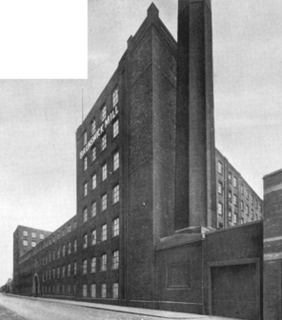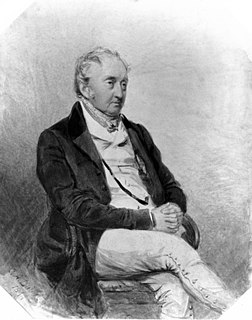John Hetherington & Sons was a textile machinery manufacturer from Ancoats, Manchester in England, founded in 1830
John Hetherington & Sons was a textile machinery manufacturer from Ancoats, Manchester in England, founded in 1830

John Hetherington & Sons was founded in 1830. The company gradually expanded and acquired a number of factory buildings in Ancoats. It established the Vulcan Works on Pollard Street in around 1856 and left these buildings in 1939 when the Lancashire cotton industry was in decline.
The company then moved to the Union Iron Works at West Gorton. The Vulcan Works was still used until 2004, when it was sold to a property developer for conversion into flats.
In the recession of the 1930s, Platt Brothers, Howard and Bullough, Brooks & Doxey, Asa Lees, Dobson and Barlow, Joseph Hibbert, John Hetherington and Tweedales and Smalley merged to become Textile Machinery Makers Ltd., but the individual units continued to trade under their own names until the 1970, when they were rationalised into one company called Platt UK Ltd. [1] In 1991 the company name changed to Platt Saco Lowell. [2]

Vulcan Iron Works was the name of several iron foundries in both England and the United States during the Industrial Revolution and, in one case, lasting until the mid-20th century. Vulcan, the Roman god of fire and smithery, was a popular namesake for these foundries.

Ancoats is an area of Manchester in North West England, next to the Northern Quarter, the northern part of Manchester city centre.
Platt Brothers, also known as Platt Bros & Co Ltd, was a British company based at Werneth in Oldham, North West England. The company manufactured textile machinery and were iron founders and colliery proprietors. By the end of the 19th century, the company had become the largest textile machinery manufacturer in the world, employing more than 12,000 workers.

Howard & Bullough was a firm of textile machine manufacturers in Accrington, Lancashire. The company was the world's major manufacturer of power looms in the 1860s.
Mather & Platt is the name of several large engineering firms in Europe, South Africa and Asia that are subsidiaries of Wilo SE, Germany or were founded by former employees. The original company was founded in the Newton Heath area of Manchester, England, where it was a major employer. That firm continues as a food processing and packaging business, trading as M & P Engineering in Trafford Park, Manchester.

The Lancashire Loom was a semi-automatic power loom invented by James Bullough and William Kenworthy in 1842. Although it is self-acting, it has to be stopped to recharge empty shuttles. It was the mainstay of the Lancashire cotton industry for a century.
Tweedales and Smalley was a manufacturer of textile machinery in Castleton, Rochdale, Greater Manchester, in England. It specialised in ring spinning frames mainly for export.
In the recession of the 1930s, Platt Brothers, Howard and Bullough, Brooks and Doxey, Asa Lees, Dobson and Barlow, Joseph Hibbert, John Hetherington and Tweedales and Smalley merged to become Textile Machinery Makers Ltd., but the individual units continued to trade under their own names until 1970, when they were rationalised into one company called Platt UK Ltd. In 1991 the company name changed to Platt Saco Lowell. The Globe works closed in 1993.
Asa Lees was a firm of textile machine manufacturers in Oldham, Lancashire. Their headquarters was the Soho Iron Works, Greenacres. It was second only in size to Platt Brothers.

Dobson and Barlow were manufacturers of textile machinery with works in Bolton, Greater Manchester. Isaac Dobson (1767-1833) founded the company in 1790 and by 1850 Dobson in partnership with Peter Rothwell had premises in Blackhorse Street which produced mules for cotton spinning. The company moved to a larger factory in Kay Street which had 1,600 workers in 1860.
Butterworth and Dickinson were textile machinery manufacturers in Burnley, Lancashire, England. Known as "Butts and Dicks", the company made looms that were exported around the world.
Brooks & Doxey was a textile machinery manufacturer from West Gorton, Manchester in England. It was founded in 1859. It was incorporated in 1920. The company used the Union Iron Works, West Gorton. The company also had a factory in Stockport. Ferranti bought the old Union Iron Works to make mainframe computers in 1956. It later became ICT, then ICL. ICT grafted a ‘modern’ entrance on but kept the works.
Joseph Hibbert was a textile machinery manufacturer from Darwen, Lancashire in UK. The Iron, Brass and Copper Works was in Bridge Street.

Taylor, Lang & Co. was a textile machinery manufacturer based in Stalybridge, Greater Manchester, England.

Brunswick Mill, Ancoats is a former cotton spinning mill on Bradford Road in Ancoats, Manchester, England. The mill was built around 1840, part of a group of mills built along the Ashton Canal, and at that time it was one of the country's largest mills. It was built round a quadrangle, a seven-storey block facing the canal. It was taken over by the Lancashire Cotton Corporation in the 1930s and passed to Courtaulds in 1964. Production finished in 1967.

John Kennedy was a Scottish textile industrialist in Manchester.

Albion Mill is a former industrial building in Manchester, United Kingdom. It occupies the site of a former cotton mill and ironworks.

The Globe Works is a former industrial works in Accrington, Lancashire, England, that following refurbishment contains rented offices and conference rooms and is known as the Globe Centre. The centre is made up of the remainder of The Globe Works, which created machinery and looms for the cotton industry under management of the Howard & Bullough firm.

The technique of sizing a warp was mechanised during the nineteenth century when William Radcliffe and his assistant Thomas Johnson invented the sizing machine. The purpose of introducing size, which is either a starchy substance for cotton or gelatinous mixture for woollen fibre, is to reduce the chances of threads fraying and breaking due to the friction of the weaving process. The size stiffens the thread and helps the fibres lie closely together. Many recipes for size can be found in textile manufacturing books. The recipes include flour, sago, china clay, types of soap, fats and some chemicals.

Kearsley Mill is a 240,000 sq ft (22,000 m2), late period cotton mill located in the small village of Prestolee in Kearsley, Greater Manchester, part of the historic county of Lancashire. A near complete example of Edwardian mill architecture, the building now functions as headquarters for a number of businesses and is still used in the continued manufacturing and distribution of textiles by Richard Haworth Ltd Est (1876), part of the Ruia Group. The mill is a Grade II listed building.